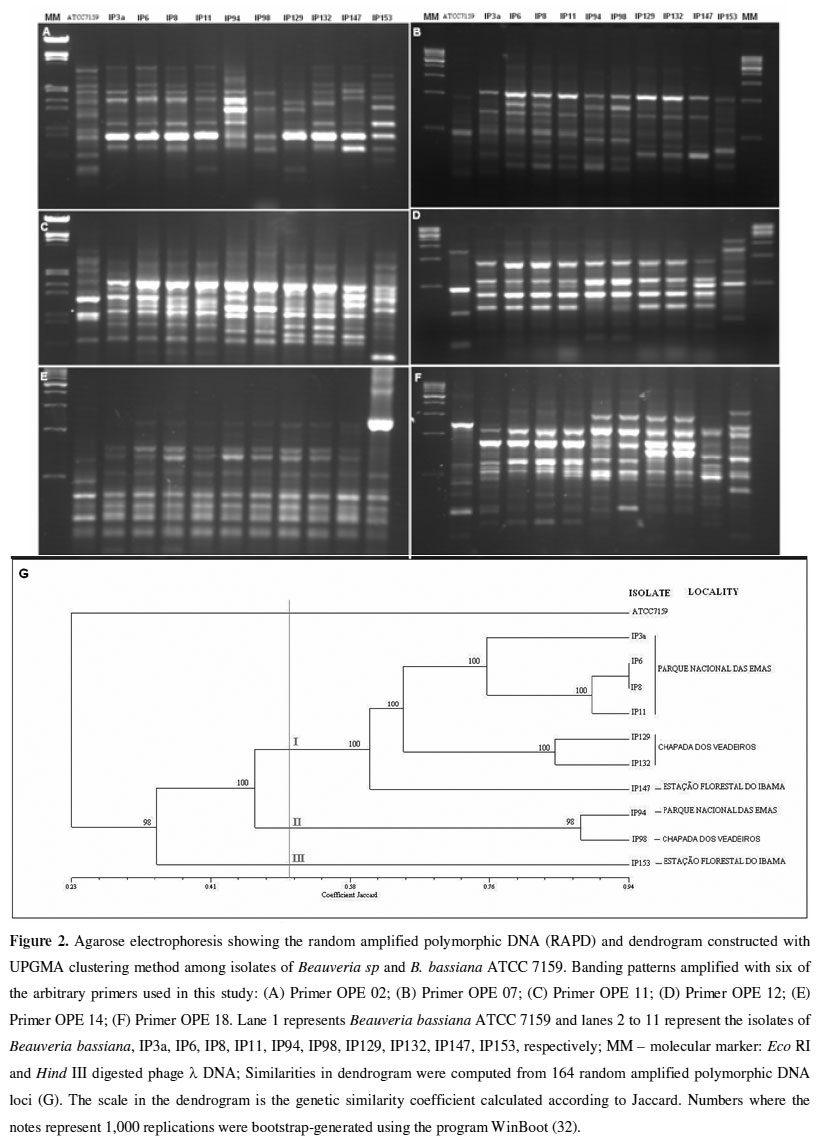Beauveria bassiana genetic diversity and ability to synthesize quercetin 2,3-dioxygenase (quercetinase) were analyzed. B. bassiana isolates, obtained from Brazilian soil samples, produced quercetinase after induction using 0.5 g/L quercetin. B. bassiana ATCC 7159 (29.6 nmol/mL/min) and isolate IP 11 (27.5 nmol/ml/min) showed the best performances and IP 3a (9.5 nmol/mL/min) presented the lowest level of quercetinase activity in the culture supernatant. A high level of polymorphism was detected by random amplified polymorphic DNA (RAPD) analysis. The use of internal-transcribed-spacer ribosomal region restriction fragment length polymorphism (ITS-RFLP) did not reveal characteristic markers to differentiate isolates. However, the ITS1-5.8S-ITS2 region sequence analysis provided more information on polymorphism among the isolates, allowing them to be clustered by relative similarity into three large groups. Correlation was tested according to the Person's correlation. Data of our studies showed, that lower associations among groups, level of quercetinase production, or geographical origin could be observed. This study presents the production of a novel biocatalyst by B. bassiana and suggests the possible industrial application of this fungal species in large-scale biotechnological manufacture of quercetinase.
Beauveria bassiana; quercetinase; quercetin-2,3-dioxygenase; genetic diversity





